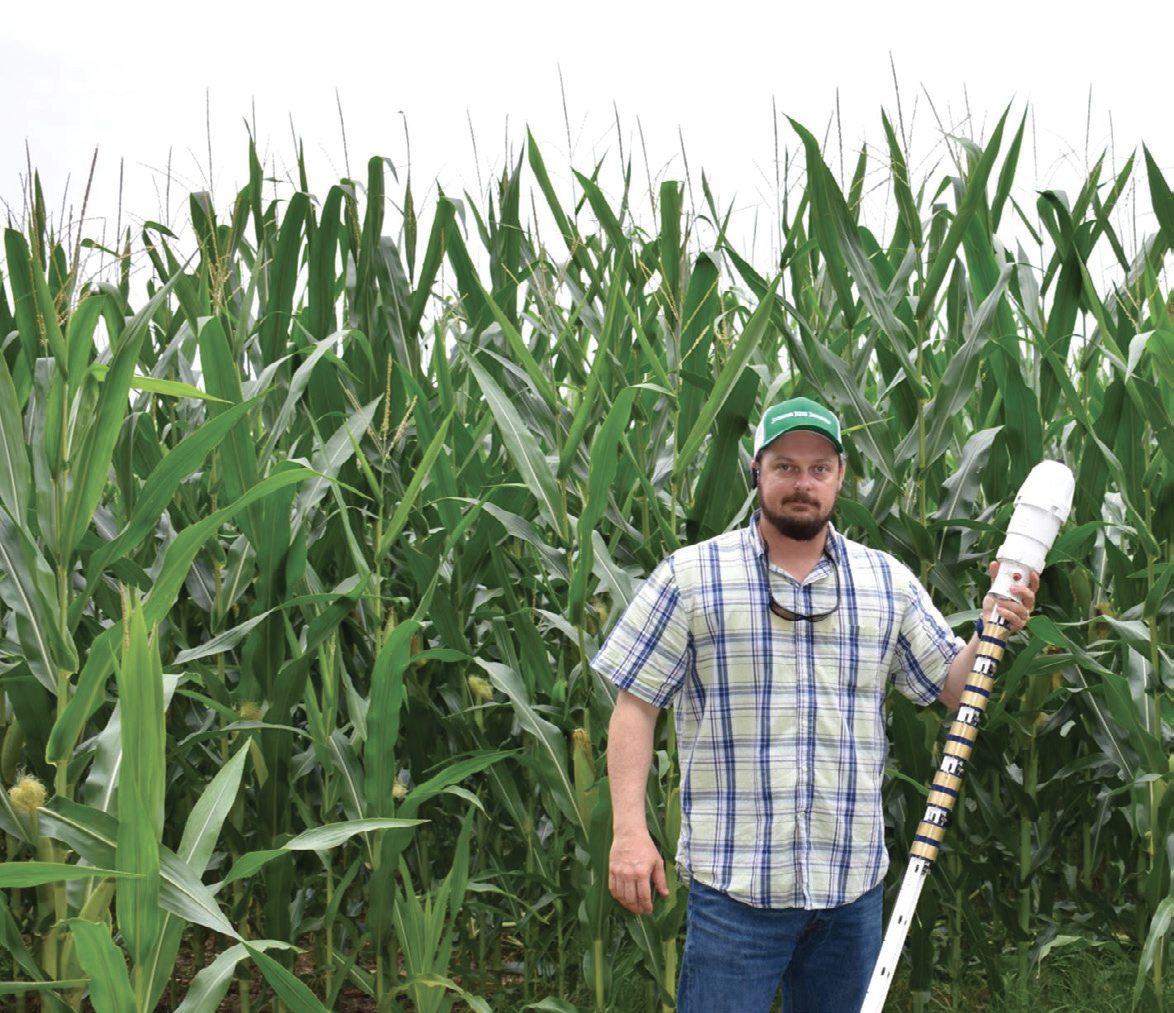
Apr 22, 2021
Southeast growers try precision irrigation, doing more with less
Organic growers are all about responsible use of natural resources, so tools to do more growing with less water might be a welcome addition.
Produce growers in Florida and Georgia are increasingly turning to soil moisture sensors to fine-tune their irrigation schedules and understand the dynamics of their fields. University of Florida Extension agent Charles Barrett, who specializes in water resources, spoke on precision irrigation in sessions of the virtual Southeast Regional Fruit and Vegetable Conference in January. Over the last three years, he has worked with dozens of county Extension agents in Florida and Georgia to help growers use and better understand soil moisture sensors.
Barrett said the biggest question he gets from growers is whether the sensors are accurate. So early on in his work, he checked the readings of soil moisture sensors by digging down to the level of the sensors, which record moisture at depths of 4, 8, 12 and 16 inches.
“It makes sense in reality,” he said.
Beyond simply purchasing the hardware and looking at raw numbers, he encourages growers to try to understand the graphs and data the software produces – it can be used to manage the risk of overwatering and understand the plant root systems.
A grower’s perspective
A case study for what water sensors can do for a grower was provided by Brandon DeWitt, owner of DeWitt Farms, who spoke during a session with Barrett. Based in Quitman, Georgia, DeWitt Farms and DeWitt Produce Co. grow a variety of row crops and specialty crops for bulk, processing and wholesale markets, according to the Georgia Grown state marketing program.
DeWitt has worked at the family business since he was a child. He started growing vegetables for himself in 2005; his dad has grown them since 1985.
“We just kept growing and escalating in the produce business,” DeWitt said.
Early on, soil moisture tests were pretty low-tech.
“Around 2013 or so, we had a guy retire and I was kind of doing all our irrigation. We just did the normal, just dig down in the soil, just kind of probe around in the soil and see how it felt, and just go by how much that day you want to irrigate, whether it be an hour, two hours per event or whatnot, to maintain moisture for the crop to grow. As time went on, and I looked at it, (and) kinda thought, there’s got to be a better way to do this.”
There was a learning curve to the precision irrigation, but he eventually found a water moisture sensor that worked for him. At the end of 2017, he got help interpreting the data to fine-tune the irrigation. He explained that accurate irrigation is important for crops like peppers where a misstep can cause season-long problems.
“Overwatering – you just cause a lot of problems with phytophthora, especially if you’ve got fields that have a bad history of phytophthora. Underwatering – you get a blossom end rot in pepper. So, I was just trying to stay on top of it the best I could.”
Additional training helped him to understand graphs the machine produced and helped him take into account field capacity – the amount of water held in the soil after the excess has drained – based on soil type.
Underground eyeglasses
Checking the water levels from one field to another gives him peace of mind in afternoons when he makes decisions about irrigation and the rest of the day’s work.
“You can’t really get a reading in the morning,” he said. “You need to get a reading on what that crop’s drinking– at least, somewhere closer to 4:00 in the afternoon where it’s done what it’s going to do throughout that day.”
Dips in moisture at a specific soil depth can show whether or not plant roots can reach the water, Barrett said, showing graphs from one of DeWitt’s farms.
“As you let that dry down, those roots started digging down deeper and deeper, and then you were able to pick it back up, and these irrigation events kept you stable,” Barrett said to DeWitt. “And the thing I like is when I look at your (graph), is how steady these lines are. Throughout the whole season, you’re staying steady.”
DeWitt does find the information of use for decision-making.
“It’s like having a pair of glasses if you need a pair of glasses,” he said. “You now understand what’s going on down there. You have something to measure it by. You have some information to go by. Fields that we were putting five hours (of irrigation) a day on, we cut that back to three hours a day. … we didn’t have to do those two extra hours.”
Over the years, the farm operation has increased the number of water sensors it uses from one to five, and DeWitt said they’re “worth their
weight in gold” because of savings in labor, wear and tear on the well and a reduced need for plant nutrition. Reduced irrigation means reduced salt leaching or less loss of nutrients.
In closing, DeWitt offered a few pointers to his fellow growers.
“I would suggest, too, as far as getting a sensor, do your research. Just don’t go to the first one you see,” he said. “If you do get a sensor, do your best to understand it.”






